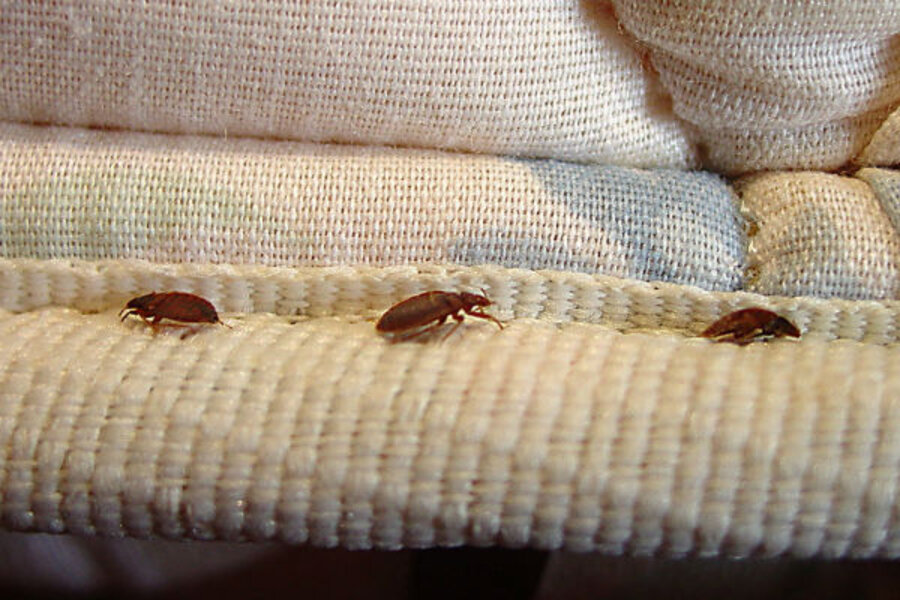Bed bugs: How not to bring them home from summer vacation hot spots
Loading...
Terminix released its ranking of the top 15 cities with bed-bug infestations today (based on the number of calls in each market), raising public awareness of how people can avoid these nasty insects during the busy summer travel months.
The problem with the steady increase in bed bugs is that they are showing up more in public places such as schools, hospitals, and theaters, says Stoy Hedges a Terminix entomologist.
As bed bugs hitch rides on purses, luggage and clothes, and find a person to feed on, one female or a few eggs can grow and reproduce.
RELATED: Are you a Helicopter Parent? Take our quiz!
“Most infestations don’t rise to nightmare level with hundreds, but a few bed bugs is enough to be concerning,” says Mr. Hedges.
Researchers do not know why bed bugs appear more in certain geographic areas (Ohio has three cities on the top 15 list), but they are widespread across the US.
Although there is no central data management for bed bug incidents, their numbers do appear to be on the rise, says Missy Henriksen, vice president of public affairs at the National Pest Management Association.
A study done by the NPMA and the University of Kentucky in August 2011, found that 99 percent of US pest management professionals surveyed said they treated bed bugs within the past year. This is up from 95 percent in 2010, but a large increase over just 25 percent in 2000. According to the survey, 73 percent said that bed bugs are the most difficult pest to treat.
“Individual companies report their findings from their business,” she says. “That is a good reflection of what is going on, but not representative of what all companies are finding.”
Ms. Henrikson is not familiar with how exactly Terminix collects data, but she says their message is important for this time of year – the beginning of summer travel season.
She says that bed bugs have increased in the past decade due to increased international travel, the bug’s resistance to pesticides, and the public’s lack of awareness about how to identify and treat bed bugs.
“In the 1940s we didn’t see many bed bugs here,” says Henriksen. “They were seen more in other countries. As the numbers have increased and people continue to travel, the population continues to spread.”
There are precautions that people can take while traveling – and at home – to identify bed bugs, which look like thin apple seeds. Henriksen says it’s important to inspect hotel rooms before settling in or unpacking especially near the headboard, on the sheets, and other soft goods in the room. The least likely place to find bed bugs is the bathroom, so that is a good place to keep your luggage. She also recommends keeping clothes in sealed plastic bags.
The NPMA offers these additional tips on its website:
– Pull back the sheets and inspect the mattress seams and box springs, particularly at the corners, for stains, spots or shed bed bug skins.
– Do not place luggage on upholstered surfaces or on the bed.
– If you notice bed bugs in your room, notify management and request to change rooms.
– When you return home, inspect your suitcases before bringing them into the house.
– Vacuum your suitcase thoroughly before bringing indoors and storing.
– Wash all of your clothes in hot water to remove any bed bugs or eggs that may have traveled home with you.
RELATED: Are you a Helicopter Parent? Take our quiz!
Recommendations for treating bed bugs are obviously to call a termination expert, but the Peace Corps – for example – recommends that volunteers poor boiling water on mattresses and leave them in the sun all day. If it seems like pesticides are necessary, it’s probably best to leave that to the professionals.





